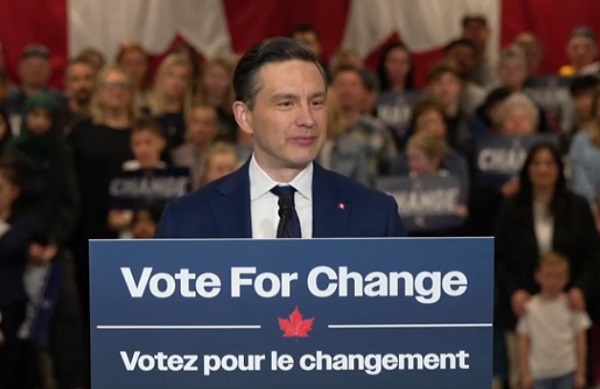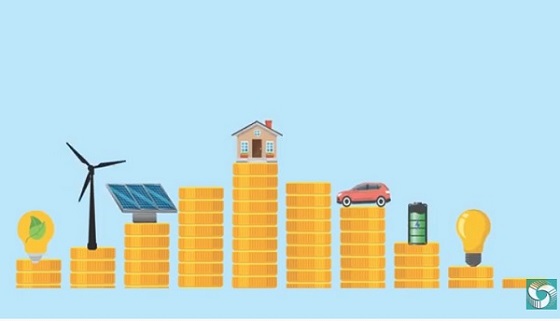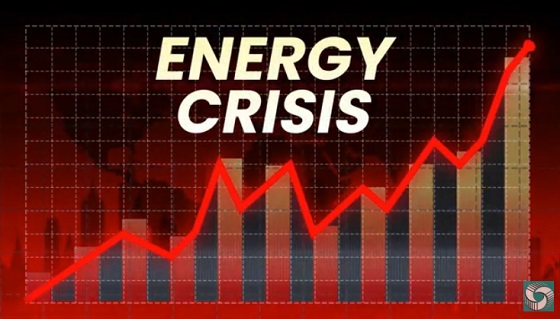Business
Three ‘hard truths’ about Canada’s trade

From the Fraser Institute
Author: Jock Finlayson
In Canada’s case, a small number of sectors reliably generate significant trade surpluses, which help finance large trade deficits incurred in other parts of our economy.
Canada is an “open” economy that depends on cross-border flows of trade, investment and data/knowledge to maintain high living standards. To pay our way in a very competitive world, Canadians must produce and sell goods and services to customers in other countries. These exports furnish the means to pay for the vast array of imports that contribute to the well-being of Canadian households and allow our businesses to operate efficiently and grow by accessing bigger markets.
In 2022, Canada exported $779 billion of goods to other countries, along with $161 billion of services, for a total of $940 billion. The services category includes a wide array of commercial services including professional, scientific, technical, digital and financial, as well as transportation services and international tourism (when non-Canadian visitors travel to spend money here).
About three-quarters of Canada’s exports are destined for a single market—the United States, whose economy has steadily expanded in size over time to reach some US$25 trillion of gross domestic product today. Canada also sources the bulk of our imports from the U.S.
The centrality of the American market to Canada’s economic prosperity is the first “hard truth” about Canada’s trade, a point explored in a recent paper by Steve Globerman. Despite periodic efforts to diversify Canada’s trade and commercial links over the last 50 years, Canada remains as closely tied to the American economy today as we were in the 1990s. There’s little reason to believe the Trudeau government’s recently unveiled “Indo-Pacific” strategy will change the situation. Proximity, a common language and business culture, and the impact of extensive and unusually deep business and personal ties all serve to reinforce the American-centric character of Canada’s trade. It follows that the U.S. should continue to figure prominently in the trade promotion and investment attraction activities of Canadian governments.
A second “hard truth” about Canada’s trade is the outsized place of natural resource-based products in the export mix. The first table below breaks down Canada’s goods and services exports in 2022 into the main groupings.

Added together, energy, non-metallic minerals and related products, metal ores, forest products and agri-food comprise almost half of the country’s total international exports of goods and services combined. Energy alone supplied 27 per cent of Canada’s merchandise exports (and 23 per cent of total exports) last year, generating a remarkable $212 billion in export-driven income for Canadian businesses, workers and governments.
Within the energy basket, oil and oil-based products dominate, providing about three-quarters of energy-based export revenues. Contrary to innumerable speeches and press releases issued by the current federal government, the energy share is likely to rise in the next several years, as LNG production from British Columbia comes on-line and Western Canadian oil exports increase following the completion of pipeline expansion projects.
The final “hard truth” is closely related to the second but carries a more nuanced message. Ultimately, every country will have a ledger showing the trade surpluses and trade deficits across its various industries. In Canada’s case, a small number of sectors reliably generate significant trade surpluses, which help finance large trade deficits incurred in other parts of our economy.
The second table provides a snapshot of Canada’s trade “balances”—the mix of deficits and surpluses by broad industry category.

The story is a fairly simple one; positive trade balances in the energy, mining, forestry and agri-food sectors offset chronic—and in some cases very sizable—trade deficits in consumer goods, chemicals and plastics, motor vehicles/parts, and industrial and electronic goods. We also run a smallish deficit in our overall services trade.
The trade data are informative. Among other things, they tell us where Canada has, in the language of economists, a “comparative advantage” in the global context. For a market-based economy, a pattern of positive trade balances is evidence that it very likely enjoys a comparative advantage in the industries which report consistent trade surpluses. Armed with such information, smart policymakers should strive to create and sustain an attractive business and investment climate for the industries that produce trade surpluses. Unfortunately, this is a lesson that today’s federal government in distant Ottawa has struggled to digest.
2025 Federal Election
As PM Poilievre would cancel summer holidays for MP’s so Ottawa can finally get back to work

From Conservative Party Communications
In the first 100 days, a new Conservative government will pass 3 laws:
1. Affordability For a Change Act—cutting spending, income tax, sales tax off homes
2. Safety For a Change Act to lock up criminals
3. Bring Home Jobs Act—that repeals C-69, sets up 6 month permit turnarounds for new projects
No summer holiday til they pass!
Conservative Leader Pierre Poilievre announced today that as Prime Minister he will cancel the summer holiday for Ottawa politicians and introduce three pieces of legislation to make life affordable, stop crime, and unleash our economy to bring back powerful paycheques. Because change can’t wait.
A new Conservative government will kickstart the plan to undo the damage of the Lost Liberal Decade and restore the promise of Canada with a comprehensive legislative agenda to reverse the worst Trudeau laws and cut the cost of living, crack down on crime, and unleash the Canadian economy with ‘100 Days of Change.’ Parliament will not rise until all three bills are law and Canadians get the change they voted for.
“After three Liberal terms, Canadians want change now,” said Poilievre. “My plan for ‘100 Days of Change’ will deliver that change. A new Conservative government will immediately get to work, and we will not stop until we have delivered lower costs, safer streets, and bigger paycheques.”
The ’100 Days of Change’ will include three pieces of legislation:
The Affordability–For a Change Act
Will lower food prices, build more homes, and bring back affordability for Canadians by:
- Cutting income taxes by 15%. The average worker will keep an extra $900 each year, while dual-income families will keep $1,800 more annually.
- Axing the federal sales tax on new homes up to $1.3 million. Combined with a plan to incentivize cities to lower development charges, this will save homebuyers $100,000 on new homes.
- Axing the federal sales tax on new Canadian cars to protect auto workers’ jobs and save Canadians money, and challenge provinces to do the same.
- Axing the carbon tax in full. Repeal the entire carbon tax law, including the federal industrial carbon tax backstop, to restore our industrial base and take back control of our economy from the Americans.
- Scrapping Liberal fuel regulations and electricity taxes to lower the cost of heating, gas, and fuel.
- Letting working seniors earn up to $34,000 tax-free.
- Axing the escalator tax on alcohol and reset the excise duty rates to those in effect before the escalator was passed.
- Scrapping the plastics ban and ending the planned food packaging tax on fresh produce that will drive up grocery costs by up to 30%.
We will also:
- Identify 15% of federal buildings and lands to sell for housing in Canadian cities.
The Safe Streets–For a Change Act
Will end the Liberal violent crime wave by:
- Repealing all the Liberal laws that caused the violent crime wave, including catch-and-release Bill C-75, which lets rampant criminals go free within hours of their arrest.
- Introducing a “three strikes, you’re out” rule. After three serious offences, offenders will face mandatory minimum 10-year prison sentences with no bail, parole, house arrest, or probation.
- Imposing life sentences for fentanyl trafficking, illegal gun trafficking, and human trafficking. For too long, radical Liberals have let crime spiral out of control—Canada will no longer be a haven for criminals.
- Stopping auto theft, extortion, fraud, and arson with new minimum penalties, no house arrest, and a new more serious offence for organized theft.
- Give police the power to end tent cities.
- Bringing in tougher penalties and a new law to crack down on Intimate Partner Violence.
- Restoring consecutive sentences for multiple murderers, so the worst mass murderers are never let back on our streets.
The Bring Home Jobs–For a Change Act
This Act will be rocket fuel for our economy. We will unleash Canada’s vast resource wealth, bring back investment, and create powerful paycheques for workers so we can stand on our own feet and stand up to Trump from a position of strength, by:
- Repealing the Liberal ‘No Development Law’, C-69 and Bill C-48, lifting the cap on Canadian energy to get major projects built, unlock our resources, and start selling Canadian energy to the world again.
- Bringing in the Canada First Reinvestment Tax Cut to reward Canadians who reinvest their earnings back into our country, unlocking billions for home building, manufacturing, and tools, training and technology to boost productivity for Canadian workers.
- Creating a One-Stop-Shop to safely and rapidly approve resource projects, with one simple application and one environmental review within one year.
Poilievre will also:
- Call President Trump to end the damaging and unjustified tariffs and accelerate negotiations to replace CUSMA with a new deal on trade and security. We need certainty—not chaos, but Conservatives will never compromise on our sovereignty and security.
- Get Phase 2 of LNG Canada built to double the project’s natural gas production.
- Accelerate at least nine other projects currently snarled in Liberal red tape to get workers working and Canada building again.
“After the Lost Liberal Decade of rising costs and crime and a falling economy under America’s thumb, we cannot afford a fourth Liberal term,” said Poilievre. “We need real change, and that is what Conservatives will bring in the first 100 days of a new government. A new Conservative government will get to work on Day 1 and we won’t stop until we have delivered the change we promised, the change Canadians deserve, the change Canadians voted for.”
Automotive
Canadians’ Interest in Buying an EV Falls for Third Year in a Row

From Energy Now
Electric vehicle prices fell 7.8 per cent in the last quarter of 2024 year-over-year, according to the AutoTader price index
Fewer Canadians are considering buying an electric vehicle, marking the third year in a row interest has dropped despite lower EV prices, a survey from AutoTrader shows.
Forty-two per cent of survey respondents say they’re considering an EV as their next vehicle, down from 46 per cent last year. In 2022, 68 per cent said they would consider buying an EV.
Meanwhile, 29 per cent of respondents say they would exclusively consider buying an EV — a significant drop from 40 per cent last year.
The report, which surveyed 1,801 people on the AutoTrader website, shows drivers are concerned about reduced government incentives, a lack of infrastructure and long-term costs despite falling prices.
Electric vehicle prices fell 7.8 per cent in the last quarter of 2024 year-over-year, according to the AutoTader price index.
The survey, conducted between Feb. 13 and March 12, shows 68 per cent of non-EV owners say government incentives could influence their decision, while a little over half say incentives increase their confidence in buying an EV.
-

 2025 Federal Election2 days ago
2025 Federal Election2 days agoStudy links B.C.’s drug policies to more overdoses, but researchers urge caution
-

 Business2 days ago
Business2 days agoIs Government Inflation Reporting Accurate?
-

 2025 Federal Election2 days ago
2025 Federal Election2 days agoCarney’s Hidden Climate Finance Agenda
-

 2025 Federal Election2 days ago
2025 Federal Election2 days agoWhen it comes to pipelines, Carney’s words flow both ways
-

 2025 Federal Election2 days ago
2025 Federal Election2 days agoPolls say Canadians will give Trump what he wants, a Carney victory.
-

 2025 Federal Election2 days ago
2025 Federal Election2 days agoThe Anhui Convergence: Chinese United Front Network Surfaces in Australian and Canadian Elections
-

 2025 Federal Election21 hours ago
2025 Federal Election21 hours agoPoilievre Campaigning To Build A Canadian Economic Fortress
-

 Automotive20 hours ago
Automotive20 hours agoCanadians’ Interest in Buying an EV Falls for Third Year in a Row





